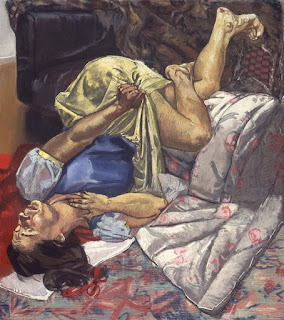Teste 2018-2019
Teste Artes Plásticas Contemporâneas
Diana V. Almeida
13 março 2019
Duração:
2h / Cotação I = 90 / II = 100 / Estrutura; argumentação; correção formal = 10
I
“There
are various ways in which art from across time can be discussed, written about
and presented to us in galleries and museums. These influence how we see art
and indeed what it can be seen to do. We can enjoy art through art
appreciation, art criticism and art history, all of which are different
approaches to understanding, experiencing and seeing art. Art history brings an
historical dimension to aspects of art appreciation, what we might term the
aesthetic enjoyment of art, and art criticism. But this historical narrative
imposes a chronology and with it comes the idea of progress through time. Our
history books are full of events in the past that are presented as part of
either the continual movement towards improvement, or as stories about great
men or epochs of time that stand out from each other (…). Therefore, our judgments
about art and our viewing of it are influenced by the way its history is told [which
contributes to re-order our] visual experience. This can lead us to accept that
writing about the history of art from the point of view of artists — usually
‘great men’ — or of artistic styles of the great epochs of the history of art
(…) is the only way to do it. (…) This is encouraged by the ways in which art
is displayed in many museums and galleries.”
Dana
Arnold, “Looking”, A Short Book about Art,
9-35, 14-15.
Comente o excerto apresentado, tendo em conta o modelo programático
desta unidade curricular e/ou a sua experiência enquanto visitante a um museu.
II
Barbara Kruger (1945-), Untitled (Thinking of You), 1999-2000
Serigrafia sobre vinil, 312.7 × 255.7 cm
Analise a obra acima
reproduzida.



Comentários
Enviar um comentário